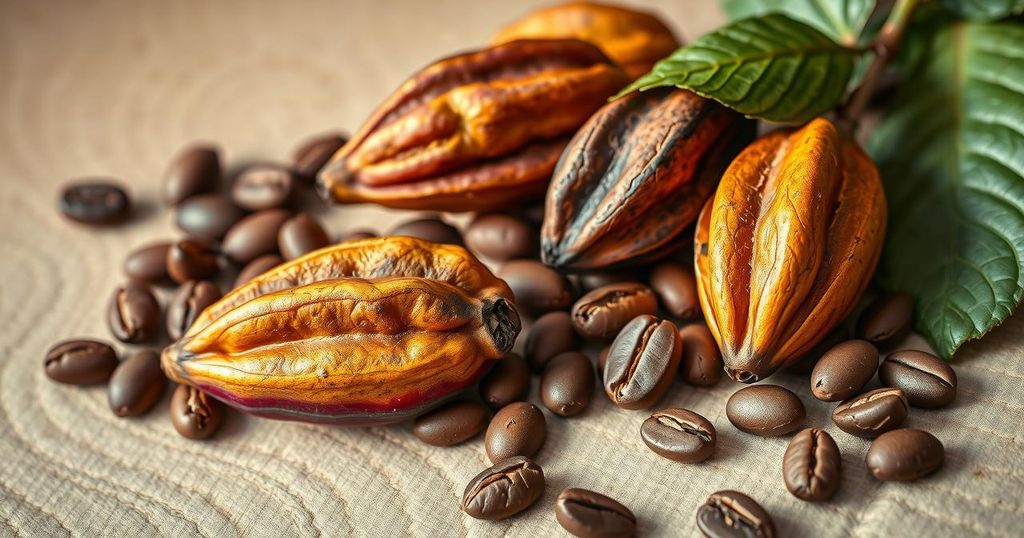Weather Influences Cause Cocoa and Coffee Prices to Rise Amid Sugar Decline

Weather concerns are driving cocoa and coffee prices upward while sugar prices decline. Cocoa futures rose 3% to $8,060 per metric ton, influenced by dry conditions in the Ivory Coast. Sugar dipped 0.7% due to poor forecasts for crops in India and Brazil. Investors must monitor these developments as they impact global agricultural markets and investment strategies.
Recent weather concerns have prompted a surge in cocoa and coffee prices, while sugar prices have taken a downturn. Investors are apprehensive about dry weather affecting cocoa crops in the Ivory Coast, alongside slow arrival rates at ports, leading to a 3% increase in cocoa futures in New York to $8,060 per metric ton. Conversely, sugar values fell by 0.7% to 19.83 cents per pound due to uncertain crop forecasts in India and unfavorable conditions for Brazil’s sugarcane harvest.
Cocoa prices in London rose by 2.4%, echoing New York’s trends. Additionally, Arabica coffee experienced a 0.9% rise amid mixed weather conditions in Brazil impacting moisture levels, while robusta coffee also rose 0.8%. The impending rain may help certain Brazilian areas but not universally. Therefore, moisture levels are critical indicators of market behavior for these commodities.
Investors must pay attention to weather patterns in Brazil and the Ivory Coast, as they greatly influence commodity price fluctuations. These insights allow investors to gauge market sentiment and project future price trajectories based on traditional supply-demand dynamics and environmental factors.
The unpredictable weather is drawing attention to global agricultural output, with implications for international markets. The volatility in Brazil and the Ivory Coast emphasizes the risks associated with reliance on specific regions for a steady supply of commodities. This situation may lead to adjustments in global trade routes and strategies for staple commodities management.
In summary, the interplay between weather conditions and agricultural outputs is crucial for understanding market movements, particularly for cocoa and coffee. The rise in prices for these commodities, against the backdrop of falling sugar prices, illustrates the sensitivity of agricultural markets to environmental factors. Investors are advised to stay informed on weather patterns as they navigate the dynamics of global trade and investment strategies in the agricultural sector.
Original Source: finimize.com







